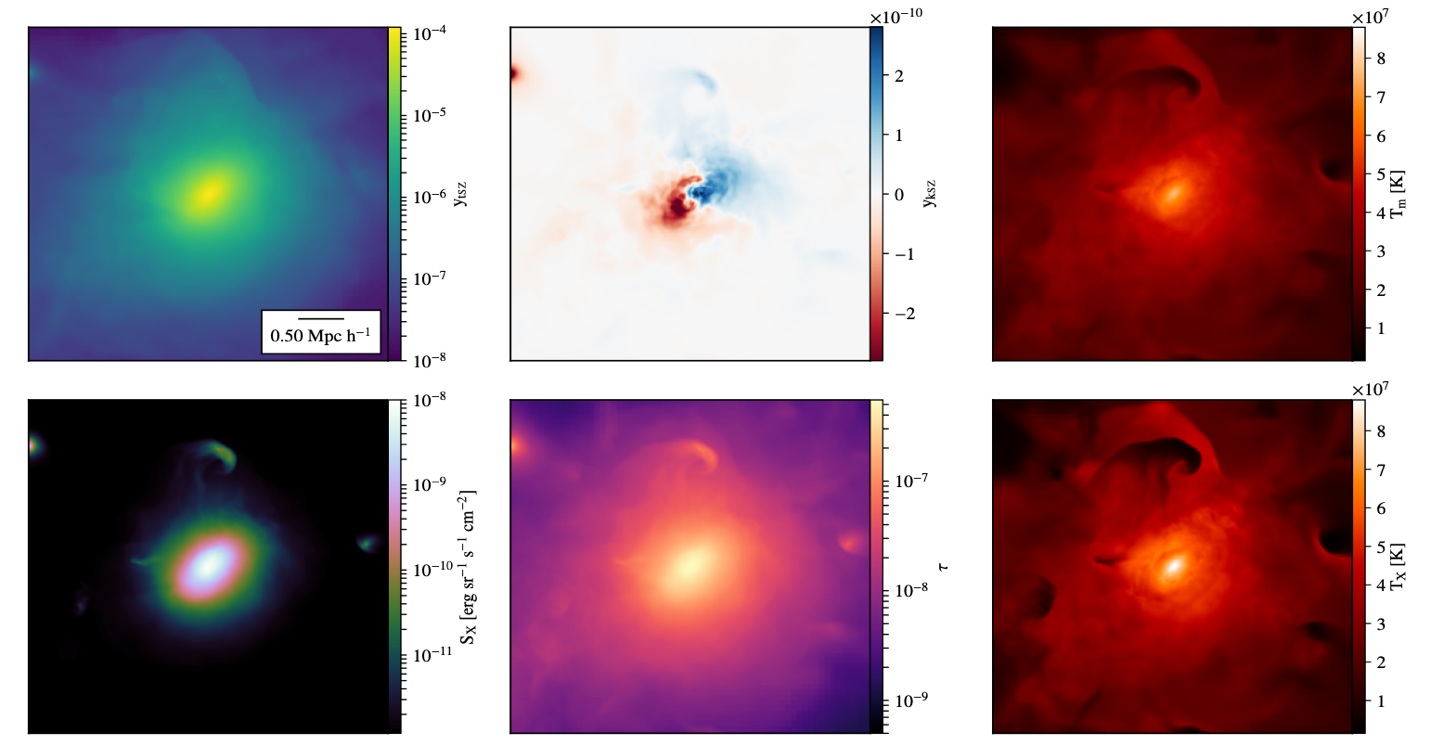Uncovering the Evolution of Galaxies and Gas
Key CMB-HD Science Objectives
1. Separately measure the density, pressure, temperature, and velocity profiles of intrahalo gas, as a function of halo mass and redshift, by combining CMB-HD’s tSZ and kSZ measurements.
2. Probe the gas physics in and around halos out to z ∼ 2 and with masses below 1012 M⊙, by stacking low-mass and high-redshift halos detected via the tSZ effect in the CMB-HD survey.

Figure 1:
SZ signals of a merging galaxy cluster extracted from the Omega500 cosmological hydrodynamical simulation; for comparison, some X-ray quantities are shown. Here is the thermal Sunyaev-Zel’dovich (tSZ) signal (top-left), kinetic Sunyaev-Zel’dovich (kSZ) signal (top-middle), projected mass-weighted temperature (top-right), X-ray surface brightness (bottom-left), electron opacity (bottom-middle), and projected X-ray temperature (bottom-right). The combination of tSZ and kSZ measurements from CMB-HD allows one to separate the pressure, density, temperature, and velocity profiles of the gas.
References (see these works and references therein)
K. Nelson, E. T. Lau, D. Nagai, D. H. Rudd, and L. Yu. Weighing Galaxy Clusters with Gas. II.
On the Origin of Hydrostatic Mass Bias in ΛCDM Galaxy Clusters. ApJ, 782:107, February 2014.
(Reference for Figure 1.)
Sehgal, N et al, CMB-HD:
Astro2020 RFI Response, Feb 2020, https://arxiv.org/abs/2002.12714
Sehgal, N et al, CMB-HD:
An Ultra-Deep, High-Resolution Millimeter-Wave Survey Over Half the Sky, September 2019,
https://arxiv.org/pdf/1906.10134.pdf

